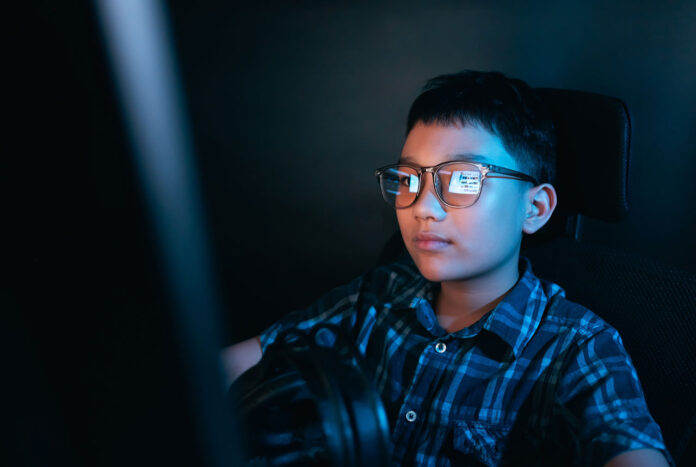
Have you ever caught your kids streaming movies from sketchy websites or downloading games from unfamiliar links? These acts may seem harmless, but with nearly 80% of global piracy caused by visits to piracy websites, there can be serious consequences. From malware and identity theft to potential legal issues, there’s no telling what your kids may stumble into without realizing the danger.
That’s why having open, honest conversations about online piracy with your children is so important, and we’re here to show you how. Let’s dive into how you can help your children make more responsible digital choices while still enjoying their favorite movies, music, and games legally and safely.
Defining Online Piracy for Kids
Online piracy, also known as digital piracy, occurs when individuals illegally download, share, or stream movies, music, games, or software without paying for them despite legal requirements to do so.
Online piracy isn’t always obvious, and it can happen in different ways. That’s why it’s important to speak in simple, broad terms when explaining this to children. Here’s an easy way to explain online piracy to kids:
If something that normally costs money is being offered for free, STOP, it’s probably pirates!
Examples of Online Piracy
What does online piracy look like? For kids, it may mean:
- Downloading a free game from a random website instead of the official store
- Watching a free movie on a website that isn’t part of a streaming service they’ve heard of before
- Using a “cracked” version of a paid software (“cracked” meaning that someone illegally modified it to remove payment or security features)
Explaining the Harm of Piracy to Kids
Getting some eye rolls and pushback? It’s easy for kids to see online piracy as a harmless way to access the copyrighted material they enjoy. Here are some impactful ways to explain the consequences of online piracy to your kids:
Ethical Concerns
Your kids want one thing: the content they love. Help them understand that piracy also affects the people in the entertainment industry who create the TV shows, music, and apps they adore. Whether it’s a favorite YouTuber, game developer, or filmmaker, content creators rely on sales and support to keep making new content. Because piracy is a form of copyright infringement, it violates intellectual property rights, putting copyright holders at risk.
- For younger kids, relate this to something personal. If they spend hours drawing a picture or writing a story, they wouldn’t want someone else to take credit for it or share it without asking. This helps them understand why it’s important to respect creators.
- For older kids, explain the bigger impact. Piracy doesn’t just affect big companies; it hurts the people who make their favorite games, movies, and music. When creators don’t get paid, it’s harder for them to keep creating, plain and simple.
Digital Risks
Your kids may care deeply about the content they have saved on their devices. Let them know that pirate websites are loaded with hidden dangers like viruses, spyware, and scams that can steal this information. Kids might not realize that clicking on a “free” download could put their sensitive data at risk and even spread malware to the home computer or through file-sharing networks. These threats don’t just slow down devices. They can lead to stolen passwords, identity theft, or financial fraud.
- For younger kids, explain that some websites may seem fun, but they actually have hidden dangers, like viruses that can mess up their games or make their tablet stop working.
- For older kids, help them understand that ignoring internet safety can put their personal information at risk, like passwords, photos, or messages, which hackers could steal or misuse.
Legal Consequences
Finally, your kids might be swayed by the law. One of the most important things kids need to know is that piracy is 100% illegal. Downloading or streaming pirated content, including illegal content and software piracy, can lead to fines, lawsuits, and even internet restrictions. In some cases, law enforcement agencies are involved in anti-piracy measures, showing how serious legality issues can be. Approach this subject carefully: the goal is to warn them, not terrify them.
- For younger kids, a helpful way to explain this is by comparing it to taking something from a store without paying. It’s not just against the rules; it has consequences.
- For older kids, parents can discuss real cases where people have faced legal trouble for piracy, showing that it’s not just a “small” issue.
Tips On How to Talk to Your Kids About Online Piracy
Talking to kids about online piracy can feel tricky, but having honest conversations can help them make better choices. Instead of just telling them what not to do, focus on explaining the reasons behind it. Here are some tips to make the conversation effective and engaging:
- Create an Open Dialogue: Encourage kids to ask questions and express their thoughts without fear of getting in trouble. If they feel comfortable talking to you, they’re more likely to listen and make better choices.
- Start the Conversation Early: Kids are exposed to digital content at a young age, so it’s never too soon to talk about the importance of using legal sources and providers. Tailor the conversation to their age and understanding, whether they’re a 6-year-old or a 12-year-old.
- Be Honest Without Scare Tactics: While piracy certainly has serious risks, avoid using extreme, fear-based language. Instead, provide clear, honest examples about the legal, ethical, and security dangers involved.
- Understand Their Perspective: Kids may not see piracy as a big deal, especially if their friends or the influencers they follow engage in it. Acknowledge their viewpoint and explain why using pirated content affects not just them but the very creators they look up to.
- Keep the Conversation Going: Instead of a one-time lecture, regularly check in about your kids’ digital habits. Find out which new social media apps they’re using and what content they’re watching. Discuss the risks of pirated content on these platforms and how it can be traced back using their IP address. This helps reinforce good decision-making over time.
Hands-on Strategies for Teaching Kids About Online Piracy
Teaching kids about online piracy goes beyond setting rules or parental controls. Here are some effective hands-on strategies for teaching kids about online piracy:
Set an Example
Children learn by watching the adults around them. If they see their parents using legal sources for digital content, such as subscribing to Netflix or purchasing apps legally, they’re more likely to follow suit. Set a good example by modeling responsible behavior and discussing why supporting content creators and paying for content is the right thing to do.
Use Real-Life Scenarios
Real-life examples can clarify the consequences of piracy for kids. Share news stories or cases where copyright owners have taken action against illegal copying, or explain how the entertainment industry is affected by illegal downloads. For older kids, discuss how even social media platforms can face issues because of pirated content to help them further understand how piracy impacts creators.
Teach Responsibility and Ownership
Help kids understand that digital content is valuable and belongs to someone, just like a physical object. If they were creating content, whether it’s a Disney animation or a music track, they would want to be compensated for their hard work. Teach them to respect the work of creators and to support their favorite content through legal means, which promotes ownership and responsibility.
Encourage Questioning
Empower your kids to ask questions about the sources they visit online. If they come across free downloads or content on a shady website, encourage them to ask whether it’s safe, legal, or trustworthy. Get them to be introspective by asking them if they’ve noticed any cybersecurity threats, malware, or inappropriate content while on the web. This can help them develop better online habits in the long run.
Provide Safe, Legal Alternatives
Instead of giving them endless warnings, offer your kids real, legal, and safe options to watch content when it comes time. Provide them access to free or low-cost services for music, games, movies, and other content on platforms like Netflix, Disney, and reputable app stores. Help them understand that these options keep them safe while also supporting their favorite creators.
How StreamSafely Can Help You
At StreamSafely, we provide valuable resources to help consumers understand the risks of accessing television, movies, and streaming content through pirated services and unauthorized password sharing. By offering clear facts and recommendations, we keep users safe while protecting the intellectual property and livelihoods of creators behind movies, TV shows, and other content.
Piracy is not a victimless crime. Use our resources to show your kids how to stay informed, stay safe, and continue to access their favorite content without breaking the law.





